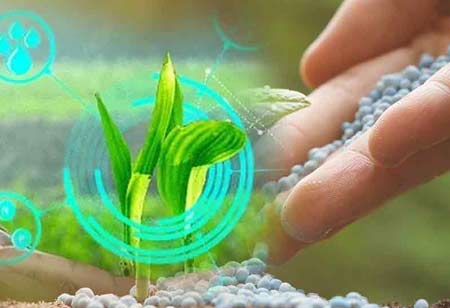Thank you for Subscribing to Agri Business Review Weekly Brief
Agriculture And Food Security Are Improved By Nuclear Technology In Five Ways
Nuclear technology is some of the most innovative ways of improving agricultural practices.

By
Agri Business Review | Tuesday, September 20, 2022
Stay ahead of the industry with exclusive feature stories on the top companies, expert insights and the latest news delivered straight to your inbox. Subscribe today.
Agriculture isotopes or radiation techniques can control pests and diseases, enhance crop production, protect land and water resources and guarantee food safety.
FREMONT, CA: Nuclear technology is some of the most innovative ways of improving agricultural practices. Agriculture isotopes or radiation techniques can control pests and diseases, enhance crop production, protect land and water resources and guarantee food safety.
FAO and the IAEA(International Atomic Energy Agency) have been extending knowledge and improving capacity in this area for beyond 50 years and have strengthened this partnership, creating a Joint FAO/IAEA Centre of Nuclear Techniques in Food & Agriculture.
Here are five instances of how FAO and IAEA are improving agriculture and food security:
1. Animal Health
Nuclear technologies have made a big distinction in detecting, controlling, and preventing transboundary animal and zoonotic disorders.
In Belize, veterinary officers were employed to send samples to laboratories abroad to spot outbreaks of diseases. Still, the Belize Agricultural Health Authority teamed up with the Joint FAO/IAEA Centre to set up its own Animal Health Molecular Diagnostic Laboratory. With the right equipment and training, lab technicians employed real-time Polymerase Chain Reaction (PCR) tests, a molecular nuclear technique, to quickly detect diseases. With these quick and accurate diagnoses, they advised field workers, who could then take action to control the disease swiftly.
2. Improved soil and water management
Though hardly imaginable, past nuclear fallouts are helping scientists. For example, when measuring and assessing soil erosion, radioactive nuclides blotted out after nuclear events can support scientists in determining the health of soils and the rate of erosion.
This technique was used in growing soybeans, once considered a minor crop in Benin. Scientists from the University of Abomey-Calavi and the National Agricultural Research Institute of Benin, helping the Joint FAO/IAEA Centre, presented a nuclear isotope to the soil to track and monitor soil quality.
They recognized the specific bacteria needed to boost field conditions for the soybean in Benin and recommended adding nitrogen-15 stable isotope fertilizer to the soil to trace fertilizer uptake and soil health.
How efficiently crops use the biofertilizer and how much nitrogen the crops capture from the atmosphere are then measured, and the fertilizer use is adjusted as needed. As a result, farmers in Benin saw their soybean production rise from 57 000 tonnes in 2009 to 220 000 tonnes in 2019.
The sterile insect technique is a nuclear-derived, environmentally-friendly method of managing destructive insect pests. It involves sterilizing male insects and then releasing them into the wild to reduce reproduction.
3. Insect pest management
The nuclear-derived SIT(sterile insect technique) is an eco-friendly method of managing insect pests. The technique involves mass-rearing the insects and then sterilizing them with ionizing radiation before releasing them back into pest-infested areas.
The technique decreases reproduction and suppresses or eradicates established insect pests. It can also hinder the proliferation of invasive species – and is much safer for the environment and human health than conventional insecticides.
Ecuador employed SIT to eliminate the Mediterranean fruit fly, one of the world’s most damaging agricultural pests, from its rising areas for three fruit species. Producers must show that this fly is not present on their farms to export these products.
Each week, backed by the Joint FAO/IAEA Centre, Ecuador imports three million sterile Mediterranean fruit flies and releases them in objective areas to mate with wild females. With this highly effective method, Ecuador has remained to export these fruit species to the United States of America – esteeming USD 22 million in 2019 alone.
4. Food safety and control
Nuclear techniques can enhance food safety and quality control by detecting or eliminating harmful residues and contaminants in food products.
For example, ionizing radiation applied to food can kill potentially harmful microbes, preventing foodborne illnesses. Food irradiation also impedes the spread of insect pests and is used to guarantee the trade of fruits and vegetables over quarantine boundaries – a fast-rising commercial application.
With FAO/IAEA help, experts in Viet Nam started research on food irradiation by the end of the 1990s, and the country now hosts 11 facilities. Gamma rays generally treat around 1 tonne of fruit per hour. In the past year, an average of 200 tonnes of fresh export fruits were illuminated per week in Viet Nam through gamma and X rays.
Nuclear technology can support develop improved crop varieties that adapt to climate change and help vulnerable countries ensure food and nutritional security.
5. Plant Breeding and Genetics
Nuclear technology employed in crop breeding can develop improved varieties that adapt to climate change and help vulnerable countries ensure food and nutritional security.
Seeds can be illuminated with gamma rays, X rays, ion, or electron beams to initiate genetic changes. This higher diversity allows for a wider selection of genetics for breeding techniques. The resulting crop varieties can have improved yield and quality, drought, heat, or flooding tolerance, better resistance to pests and diseases, or little growth cycles.
In Sudan, a drought-resistant groundnut variety was made by the country’s Agricultural Research Corporation and supported by the Joint FAO/IAEA Centre. This groundnut can grow with only 250 millimeters of rain a year compared with traditional varieties that require 350 millimeters. As a result, its yield is 27% higher than traditional varieties, paving the way for Sudan’s return to being a chief groundnut producer, enhancing food security in the country, and helping the economy.
Innovative technologies developed and applied with the Joint FAO/IAEA Centre provide better nutrition, production, environment, and lives. Nuclear technologies present enormous opportunities to help us meet present and future global challenges.





